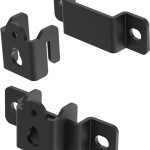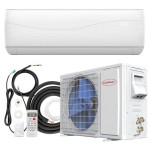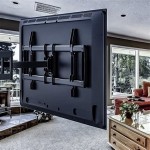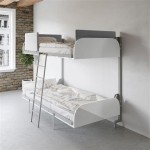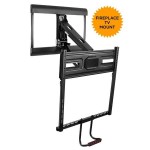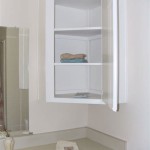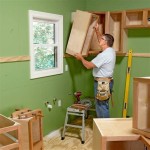Wall-Mounted Gas Space Heaters: A Comprehensive Overview
Wall-mounted gas space heaters offer a practical and efficient solution for supplemental heating in various residential and commercial settings. These appliances provide localized warmth, reducing reliance on central heating systems and potentially lowering energy costs. Their space-saving design and relatively simple installation process make them an attractive option for many. This article will delve into the key aspects of wall-mounted gas space heaters, covering their functionality, advantages, disadvantages, safety considerations, installation requirements, and maintenance guidelines.
Unlike central heating systems that distribute heat throughout an entire building, wall-mounted gas space heaters provide targeted warmth to a specific room or area. This allows occupants to heat only the spaces they are actively using, conserving energy and reducing heating bills, especially during periods when the entire building does not require uniform heating. This localized heating approach is particularly beneficial for rooms that are infrequently used, such as guest rooms or home offices, or for individuals who prefer a warmer environment than others.
Wall-mounted gas space heaters typically operate on either natural gas or propane, depending on the model and the available fuel source. These fuels are relatively inexpensive and readily available in most areas. The heater combusts the gas fuel to generate heat, which is then distributed into the room through various methods, such as convection, radiant heat, or forced air, depending on the specific technology employed by the unit. Thermostats are typically incorporated into the design of these heaters, allowing for precise temperature control and automated operation.
Fuel Efficiency and Cost Savings
The efficiency of a wall-mounted gas space heater is a crucial factor in determining its overall cost-effectiveness. Efficiency is typically measured by Annual Fuel Utilization Efficiency (AFUE), which indicates the percentage of fuel that is converted into usable heat. Higher AFUE ratings indicate greater efficiency and lower operating costs. Older models often have lower AFUE ratings compared to newer, more technologically advanced units. When selecting a wall-mounted gas space heater, it is imperative to consider the AFUE rating and compare it with other available models. Energy Star certified models, for example, meet strict efficiency guidelines and offer significant energy savings over their less efficient counterparts.
Beyond the initial purchase price, the ongoing operating costs of a wall-mounted gas space heater need to be factored into the decision-making process. The cost of natural gas or propane can vary depending on geographic location and market conditions. Calculating the estimated fuel consumption based on usage patterns and local fuel prices can provide a realistic estimate of the long-term cost savings associated with using a wall-mounted gas space heater. In many situations, using a wall-mounted gas space heater to supplement central heating can lead to significant reductions in overall heating costs, especially when only a single room or a small area requires heating.
Furthermore, the ability to control the temperature in individual rooms allows for greater energy efficiency. Occupants can set the thermostat to a lower temperature in rooms that are not in use, preventing unnecessary heating of unoccupied spaces. This zonal heating approach can significantly reduce energy consumption and lower heating bills compared to heating the entire house to a uniform temperature.
Installation and Safety Requirements
Proper installation of a wall-mounted gas space heater is paramount for safe and efficient operation. Installation should be performed by a qualified and licensed HVAC professional to ensure compliance with local building codes and safety regulations. Incorrect installation can lead to gas leaks, carbon monoxide poisoning, and other potentially dangerous situations. Before installation, it is crucial to verify that the gas line has sufficient capacity to supply the heater and that the venting system is properly sized and installed.
Wall-mounted gas space heaters require proper venting to safely exhaust combustion byproducts, such as carbon monoxide, to the outside. Venting options typically include direct vent, B-vent, or vent-free models. Direct vent heaters draw combustion air from the outside and exhaust combustion gases directly outside through a sealed system, making them the safest option. B-vent heaters rely on a chimney or vent pipe to exhaust combustion gases. Vent-free heaters, which do not require venting, are generally not recommended due to concerns about indoor air quality and carbon monoxide buildup. While vent-free models include oxygen depletion sensors that shut off the heater if oxygen levels drop too low, they still release small amounts of pollutants into the air.
Carbon monoxide detectors are essential safety devices for any home using gas-burning appliances, including wall-mounted gas space heaters. These detectors provide an early warning of dangerous carbon monoxide levels, allowing occupants to evacuate the premises and avoid carbon monoxide poisoning. Carbon monoxide detectors should be installed on every level of the house and near sleeping areas. Regular testing of carbon monoxide detectors is crucial to ensure they are functioning properly.
Maintaining a safe distance between the heater and flammable materials is also essential. Furniture, curtains, and other combustible items should be kept at least three feet away from the heater to prevent fire hazards. Children and pets should be supervised around the heater to prevent accidental burns. The heater should never be left unattended while in operation.
Types and Features of Wall-Mounted Gas Space Heaters
Wall-mounted gas space heaters are available in various types and configurations, each offering different features and benefits. The choice of heater depends on factors such as the size of the room, the desired heating capacity, the available fuel source, and personal preferences.
Radiant heaters emit heat directly into the room through infrared radiation. These heaters provide instant warmth and are particularly effective for heating small spaces. They are relatively quiet and do not circulate air, making them a good choice for individuals with allergies or sensitivities to dust. Convection heaters, on the other hand, heat the air around them, which then circulates throughout the room. These heaters provide more even heating but may take longer to warm up a space compared to radiant heaters. Forced-air heaters use a fan to circulate warm air, providing rapid and efficient heating. These heaters are often equipped with thermostats and programmable timers for automated operation.
Some wall-mounted gas space heaters offer advanced features such as remote control operation, programmable thermostats, and safety shut-off mechanisms. Remote control operation allows occupants to adjust the temperature and settings from a distance. Programmable thermostats enable users to set specific heating schedules, optimizing energy consumption and ensuring comfortable temperatures at desired times. Safety shut-off mechanisms automatically shut off the heater if it overheats or detects a gas leak, providing an extra layer of safety.
The aesthetic design of wall-mounted gas space heaters also varies, with options ranging from traditional styles to modern, minimalist designs. Selecting a heater that complements the existing décor of the room can enhance the overall aesthetic appeal. Considerations should be given to the size, shape, and color of the heater, as well as the materials used in its construction.
In conclusion, wall-mounted gas space heaters provide a versatile and efficient heating solution for a variety of applications. Choosing the correct heater, ensuring proper installation, and adhering to safety guidelines are paramount for optimal performance and safety. Understanding the characteristics of different models enables informed decision-making, ultimately leading to a comfortable and energy-efficient heating solution.

Dyna Glo 30000 Btu Wall Mount Indoor Natural Gas Or Liquid Propane Vent Free Convection Heater Bf30dtl 4 At Com

Dyna Glo Ir30nmdg 1 30 000 Btu Natural Gas Vent Free Infrared Wall Heater

Dyna Glo 30 000 Btu Natural Gas Infrared Vent Free Wall Heater

In Direct Vent Glass Propane Wall Heater W Built Thermostat 11 000 Btu At Vminnovations

Empire Direct Vent Wall Furnace 35k Btu

Procom Heating Natural Gas Ventless Blue Flame Heater With Base Feet 30 000 Btu Manual Control Model Mn300hba B

Dyna Glo 10k Btu Lp Blue Flame Vent Free Wall Heater

In 11 000 Btu Direct Vent Propane Heater Mdv12p

Gas Heater Vs Electric Aire Serv

Master Forge 12000 Btu Wall Mount Indoor Natural Gas Or Liquid Propane Vent Free Infrared Heater

